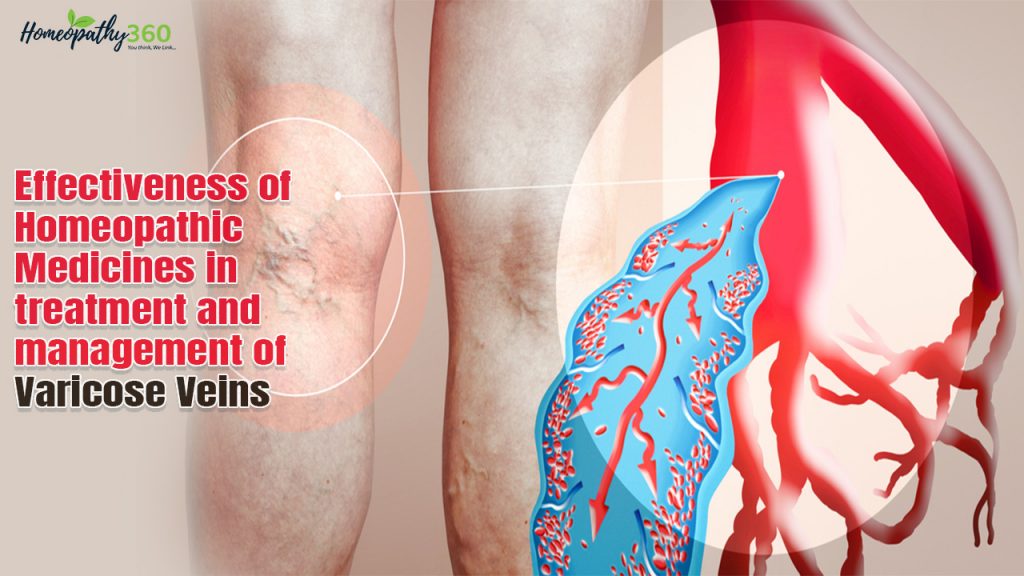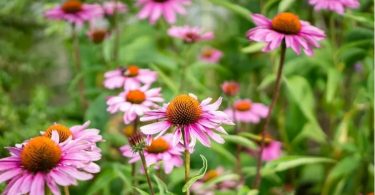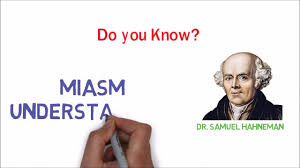
Abstract:
Varicose veins represent a condition characterized by dilated, elongated, or twisted veins, resulting from compromised valvular function within the veins. This venous disorder leads to increased venous pressure, reflux, and dilation, culminating in the visible varicosities and the seepage of fluid into the surrounding tissue. The earliest recorded observations of varicose veins date back to Ebers Papyrus, circa 1550 B.C. In the realm of alternative medicine, homeopathic treatments offer individualized remedies aimed at alleviating the various symptoms associated with varicose veins.
Keywords:
Varicose veins, Venous insufficiency, Valvular insufficiency, Venous reflux, Varicosity
Definition:
Varicose veins fall under the category of superficial venous diseases and are prevalent in various degrees within Western populations. The definition offered by Arnoldi encapsulates the condition as encompassing any dilated, elongated, or tortuous veins, regardless of their size. This definition encompasses a spectrum of manifestations, from minor varicosities and telangiectasias to significant varicose veins, providing a comprehensive understanding of the condition. Varicose veins have been historically characterized as veins that have permanently lost their ability to maintain efficient valvular function, often becoming elongated, tortuous, and thickened over time due to sustained pressure.
Introduction:
The progression of varicose veins is relentless and does not typically regress, except in specific circumstances such as post-pregnancy. The disease trajectory often leads to various complications, including superficial thrombophlebitis, bleeding from fragile varices, eczema, and ultimately, skin ulceration.
Fig. 1. Difference between a Normal Vein and a Varicose Vein
Epidemiology
Varicose veins are believed to affect a significant portion of the adult population, with a higher prevalence among women compared to men. Studies have shown variances in the incidence rates, with the Edinburgh Vein Study revealing an age-adjusted prevalence of 40% in men and 32% in women for truncal varices.
Risk Factors:
The etiology of varicose veins has been linked to a hypothesis of inherent weakness in the vein wall, with a notable decrease in vein wall elasticity suggesting that the venous valve role is secondary to the vein wall’s elastic changes. Factors such as hormonal influences, heredity, prolonged standing, obesity, and a sedentary lifestyle are known to predispose individuals to varicose veins. These factors contribute to the development and exacerbation of the condition.
Common predisposing factors include age, gender, pregnancy, body weight and height, racial background, dietary habits, bowel habits, occupation, posture, history of deep vein thrombosis (DVT), genetics, and climatic conditions.
Pathogenesis:
The pathogenesis of varicose veins involves the destruction of venous valves in the axial veins, leading to venous hypertension, reflux, and extensive dilation. This results in the formation of varicosities and fluid leakage into the subcutaneous tissue. The failure of valves within the superficial veins, often due to a hereditary connective tissue weakness, disrupts their function as they cannot adequately close dilated veins, causing a perpetual backflow towards the feet and exacerbating vein enlargement and varicose vein formation.
Classifications
The Clinical, Etiologic, Anatomic, and Pathophysiological (CEAP) classification system, introduced in 1994, categorizes varicose veins as C2 within the clinical classification for chronic venous disorders.
Fig. 1. Classification of Varicose veins as C2 as suggested in the the first CEAP consensus document in 1994
Clinical features:
Varicose veins present with a range of symptoms, including visibly prominent veins, pain, swelling, itching, skin changes, ulceration, thrombophlebitis, bleeding, and edema. Clinically, varicose veins can be assessed through inspection, typically performed while the patient is standing, to identify various signs ranging from telangiectasias to active venous ulcers. Further:
• unsightly visible veins
• pain
• swelling (often worse on standing or at the end of the day)
• itching
• skin changes
• ulceration
• thrombo- phlebitis
• bleeding
• Edema
• varicose eczema or thrombo- phlebitis
• ulcers (typically found over the malleous
SIGNS
Inspection (should be done in standing position)
• C0 – no palpable or visible signs of venous disease
• C1 – Telangiectasies (spider veins) or reticular veins ( small veins that appear blue or in colour)
• C2 – varicose veins
• C3 – edema
• C4a – pigmentation and eczema
• C4b – Lipodermatosclerosis (inflammation of the fat layer) and Atrophie blanche (white scarring)
• C5 – healed venous ulcer
• C6 – active venous ulcer
Investigations:
Diagnostic methods for varicose veins include non-invasive techniques such as Duplex scanning, Plethysmography, CT Venography, and MR Venography, as well as invasive procedures like Phlebography, Ambulatory venous pressure measurement, and Intravascular ultrasound.
Differential Diagnosis
Conditions that can mimic the symptoms of varicose veins include arteriovenous malformation, orthostatic edema, stasis dermatitis, and deep vein thrombosis. A-V malformation
• Orthostatic oedema
• Statis dermatitis
• Deep vein thrombosis
Complications:
The most common complications associated with varicose veins include pain, leg heaviness,
and fatigue. Other complications encompass superficial thrombophlebitis, hyperpigmentation, lipodermatosclerosis, atrophie blanche, and venous ulcers.
Homeopathic Medicines:
Various homeopathic remedies, such as Arnica Montana, Arsenic Album, Calcarea Carbonica, Calcarea Fluorica, Carbo Vegetabilis, Fluoricum Acidum, Hamamelis, Millefolium, Nux Vomica, Plumbum Metallicum, Pulsatilla, Pyrogenium, Sulphur, Vipera, and Zincum Metallicum, are cited for their potential benefits in treating symptoms associated with varicose veins. These remedies are chosen based on the specific symptoms and characteristics of the varicose veins in everyone.. As such:
ARNICA MONTANA – Exhibits bluish and blackish discoloration of veins. Accompanied by sore, bruised extremities and an aversion to touch or contact, leading to a sensation of heaviness in all extremities, with hands veins distended.
Hamamelis – Effective for varicose veins with stinging and pricking pain, suggesting the use of Hamamelis lotion applied locally for relief. It addresses venous congestion, varicose veins, and hemorrhages, with bruised soreness of the affected part. Varicose ulcers are very sore and burn, indicating venous relaxation and engorgement.
Millefolium – Particularly useful for varicose veins when capillaries are spongy and enlarged, leading to easy breaking of veins when congested. It helps with wounds that bleed easily and excessively. Recommended during pregnancy when varicose veins are painful, and for leg ulcers that ulcerate and bleed in pregnant women.
FLUORICUM ACIDUM – Suited for long standing cases, especially in women who have had many children, affecting varicose veins and ulcers of the lower extremities that worsen with warmth.
PULSATILLA – Indicated during and after childbirth for painful varicose veins. The veins are full, varicose, and painful, with a boring pain toward evening. Symptoms include drawing pain in thighs and legs, restlessness, sleeplessness, and chilliness, with veins in forearms and hands appearing swollen.
CALCAREA FLUORICA – For enlarged, hard varicose veins. The veins are knotted and dilate, becoming varicose and inflamed, with skin on the legs that is dry and cracked.
CALCAREA CARBONICA – Addresses varicose veins with intense burning sensations. It helps with cramps in calves when stretched out at night, and feet that are raw and burning, resembling the sensation of having worn wet stockings.
NUX VOMICA – For numbness in legs, feelings of paralysis, and cramps in calves and sole, particularly during pregnancy due to high living.
PLUMBUM METALLICUM – Helps with cramps in calves and dilated veins of the forearm and legs, with stinging, tingling, and tearing in limbs.
PYROGENIUM – For varicose ulcers on legs that discharge freely and are extremely painful, with throbbing in vessels of the neck accompanied by numbness of the hand, arm, and feet, and skin that is discolored and dry.
Conclusion:
In conclusion, the management of varicose veins can be complex, involving an array of clinical features, risk factors, and potential complications. Homeopathic medicine provides a range of treatment options that may address the diverse symptoms presented by individuals suffering from varicose veins. Each homeopathic remedy is chosen based on the specific presentation of the condition, aiming to target the underlying issues and provide relief.
References:
1. Janugade HB, Patil BP, Tata NH, Saygaonkar HV, Janugade DH, Dokania V (2017) Clinical profile and management of lower limb varicose veins. J Evol Med Dent Sci 6(20):1615–1622. https://doi. Org/10.14260/Jemds/2017/354
2. Ghosh SK (2020) Trends on management of superficial venous disease. Int Surg J 7(8):2820–2823
3. Boericke W. New Manual of Homoeopathic Materia Medica and Repertory. Reprint Edition New Delhi: B. Jain Publishers(P)Ltd.; 2011
4. The Prescriber, Author: Clarke John Henry ,B. Jain Publishers (P) Limited, 2024 ISBN:8131902897, 9788131902899




